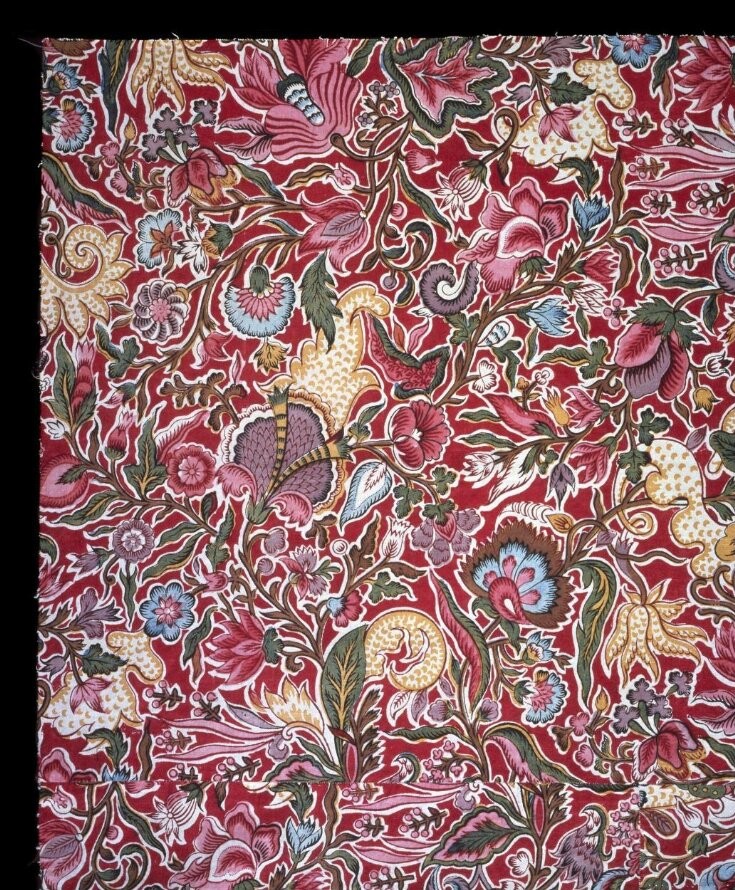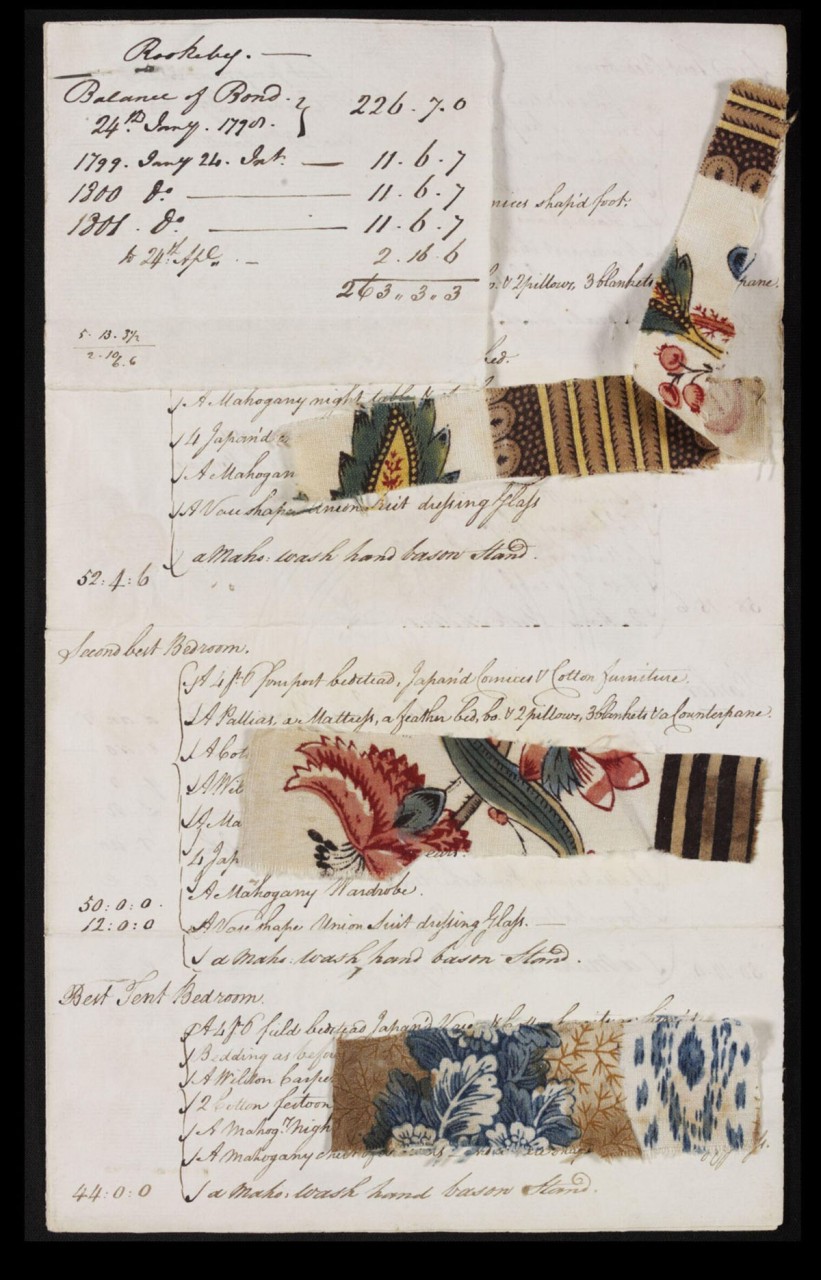Textiles and the Triplett Sisters
Early English Furniture Prints

Just a reminder that because of the chinoiserie medallion in a recent acquisition quilt, we are continuing to research early textile printers in England. Because the medallions, panels, and borders printed were considered furnishing prints, not a basic calico, we’ve been exploring early furnishing printers from the late 1700s and beyond. Bannister Hall and Bromley Hall are the most frequently cited textiles printers from the period, however both printers went through multiple different owners and did commission printing for furniture manufacturers. (To learn more about Bannister Hall and Bromley Hall, click on their names to read a previous blog post.)

Besides William Kilburn, a leading textile designer discussed in our last blog, Richard Ovey of Covent Garden was the leading London merchant for furniture prints from 1790 to 1831. Textiles at the Victoria and Albert Museum show his ability to be one of the designers of the medallions which he had printed at Bannister Hall, but he also had textiles printed up north in Carlisle Cumbria. There were many textile printers across England, but one possibility is Mr. Brummel who is listed as a textile printer in Carlisle.

But perhaps a better possibility can be found in Wigton (two miles from Old Carlisle) where the printworks was established in 1790, by a group of businessmen including William Forster, a wealthy banker from Carlisle. The printworks had 21 printers and seven indigo pencilers (textile color painters) and produced printed cotton fabric until 1817. By 1821 it was known as Ferguson Halliley and Co and was managed by Richard and Anthony Halliley, as well as Thomas McAlpin. When Thomas McAlpin took the lease of the mill in 1835, it became known as Thomas McAlpin and Sons. In 1849 it would become known as McAlpin, Stead & CO. and later Stead McAlpin. A London office was set up very early to take orders and accept commission textile printing jobs.
 Other Other potential furniture manufacturers and printers from the early period include Mr. Allen, patronized by His Royal Highness King George III. Mr. Allen was known for his chintzs in new colors each year including one year announcing tea grounds. George Seddon was a long-lived furniture and upholstery company from 1753-1868 under his name initially then Seddon & Sons, as well as Seddon, Sons, and Shackleton. Butcher and Jones of Bath was a “Wholesale and Retail Linen-Drapery and Furniture Warehouse that advertised in the newspaper the use of British muslins and furniture cottons and calicoes [sic]” as early as 1802.
Other Other potential furniture manufacturers and printers from the early period include Mr. Allen, patronized by His Royal Highness King George III. Mr. Allen was known for his chintzs in new colors each year including one year announcing tea grounds. George Seddon was a long-lived furniture and upholstery company from 1753-1868 under his name initially then Seddon & Sons, as well as Seddon, Sons, and Shackleton. Butcher and Jones of Bath was a “Wholesale and Retail Linen-Drapery and Furniture Warehouse that advertised in the newspaper the use of British muslins and furniture cottons and calicoes [sic]” as early as 1802.

